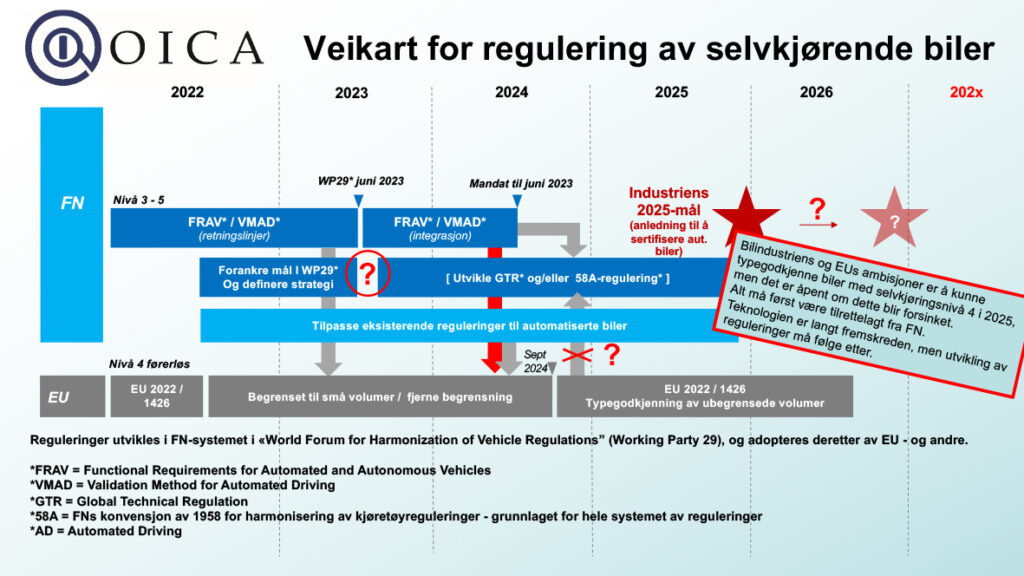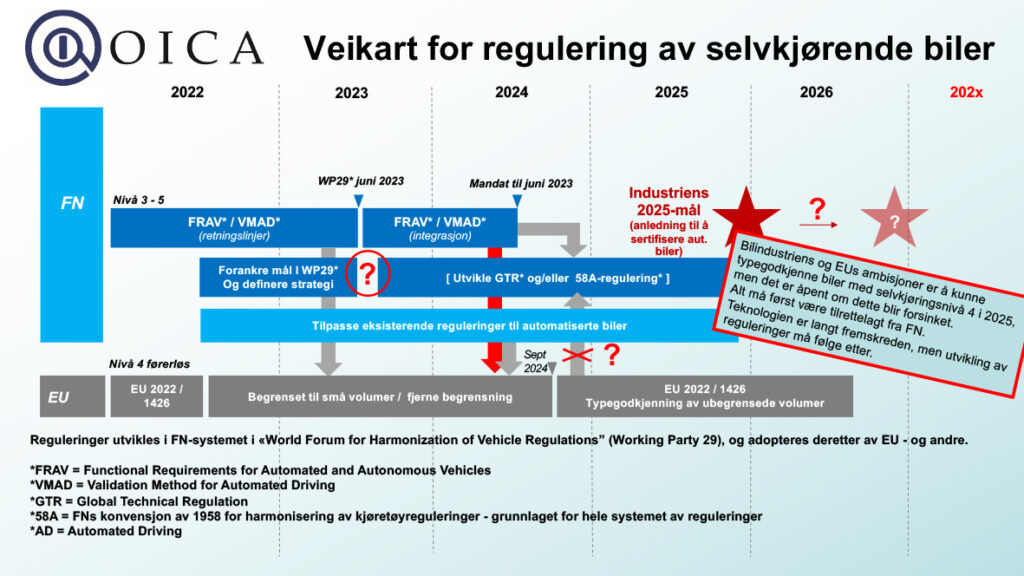Self-driving vehicles are just around the corner. In this article, we go through the processes of the next few years towards what may end with the approval of self-driving vehicles (autonomous vehicles) as early as 2025. The car you drive today probably has some level of self-driving. If you have a newer vehicle, can it, for example, register other vehicles around it, or that the vehicle has adaptive distance measurement? Maybe it also registers road markings and partially steers itself? These are technologies that already exist, although they are considered low on the self-driving level scale. The levels There are five levels of self-driving. The definitions have been prepared by Society of Automotive Engineers and is part of the basis for “Act on the testing of self-driving vehicles».
No self-driving: The driver alone, but the vehicle can in certain situations warn the driver with, for example, sound signals.
Driver assistants and other support systems help the driver, “hands on the wheel”. The systems can steer, brake and accelerate (for example cruise control). The driver looks after the systems. The driver can stop the systems by using the steering wheel, the brake or the accelerator.
Partial automation, “hands partially off the wheel”: The driver must monitor that the systems are working. The driver can switch off the systems. (For example adaptive cruise control)
Conditional automation, “eyes off the road”. The systems can maneuver the vehicle and it monitors the traffic situation, but the driver must take over control when necessary. The driver receives a notification to take over the steering. (For example Tesla’s Autopilot or Audi’s AI Traffic Jam Pilot)
High degree of automation, “concentration elsewhere”: The vehicles are mostly like Level 3, but they can also maneuver autonomously (for example with Google’s Waymo ride-hailing). The automatic systems take the lead if the automation no longer works. The vehicle will then travel to a safe location and stop.
Full automation, “vehicle without a steering wheel”: The vehicle’s systems ensure that the vehicle maneuvers in all traffic conditions. A complex software system makes the car completely self-driving. Where do we stand now?Self-driving cars are already on our roads. Preferably with a lower level of automation or autonomy. The United Nations Economic Commission for Europe (UNECE) adopted regulations for the use of automatic lane support on public roads in 2021. In Germany, Great Britain and Japan, the authorities have approved autonomous vehicles at self-driving level 3, i.e. conditional automation . Germany has level 4 as a trial project in some cities in 2023.
Both the European and the Asian car manufacturers are already in the process of producing cars with level 4. But in order to achieve vehicles with level 4 self-driving, not to mention level 5, the manufacturers are dependent on access to chip-sets, hardware and software – and that the regulation of autonomous cars is followed up by the authorities, the EU, the UN and Norway.
The way forward for regulation The car industry’s and the EU’s ambitions are to be able to type-approve cars with self-driving level 4 in 2025, but it is open whether this will be delayed. Everything must first be arranged from the UN’s side. The technology has come a long way, but the development of regulations must follow: It is predicted that the global AV market will top 1.75 trillion euros by 2030 – there are 58 million self-driving cars around the world” writes Lease plan.
Sources:

